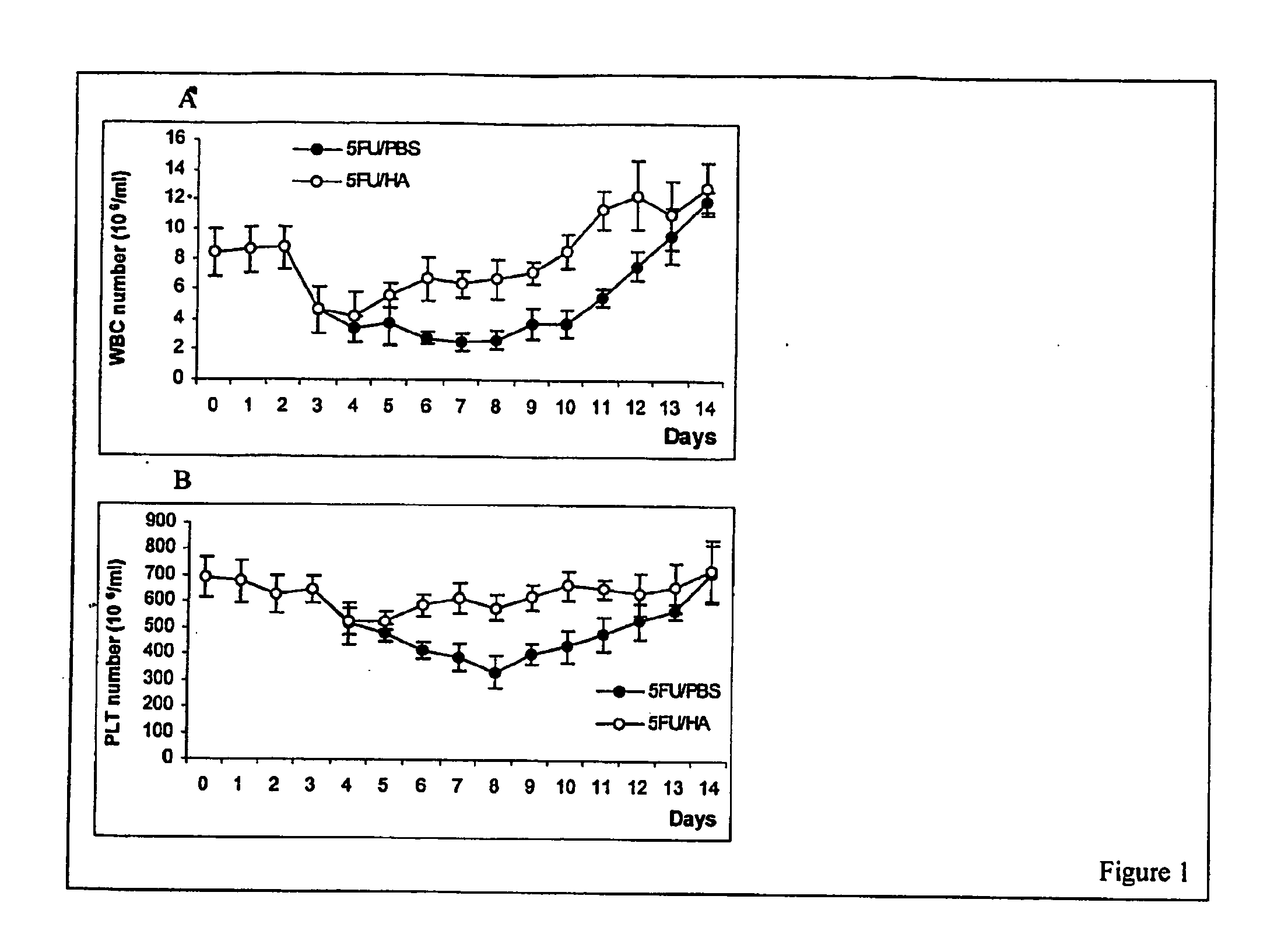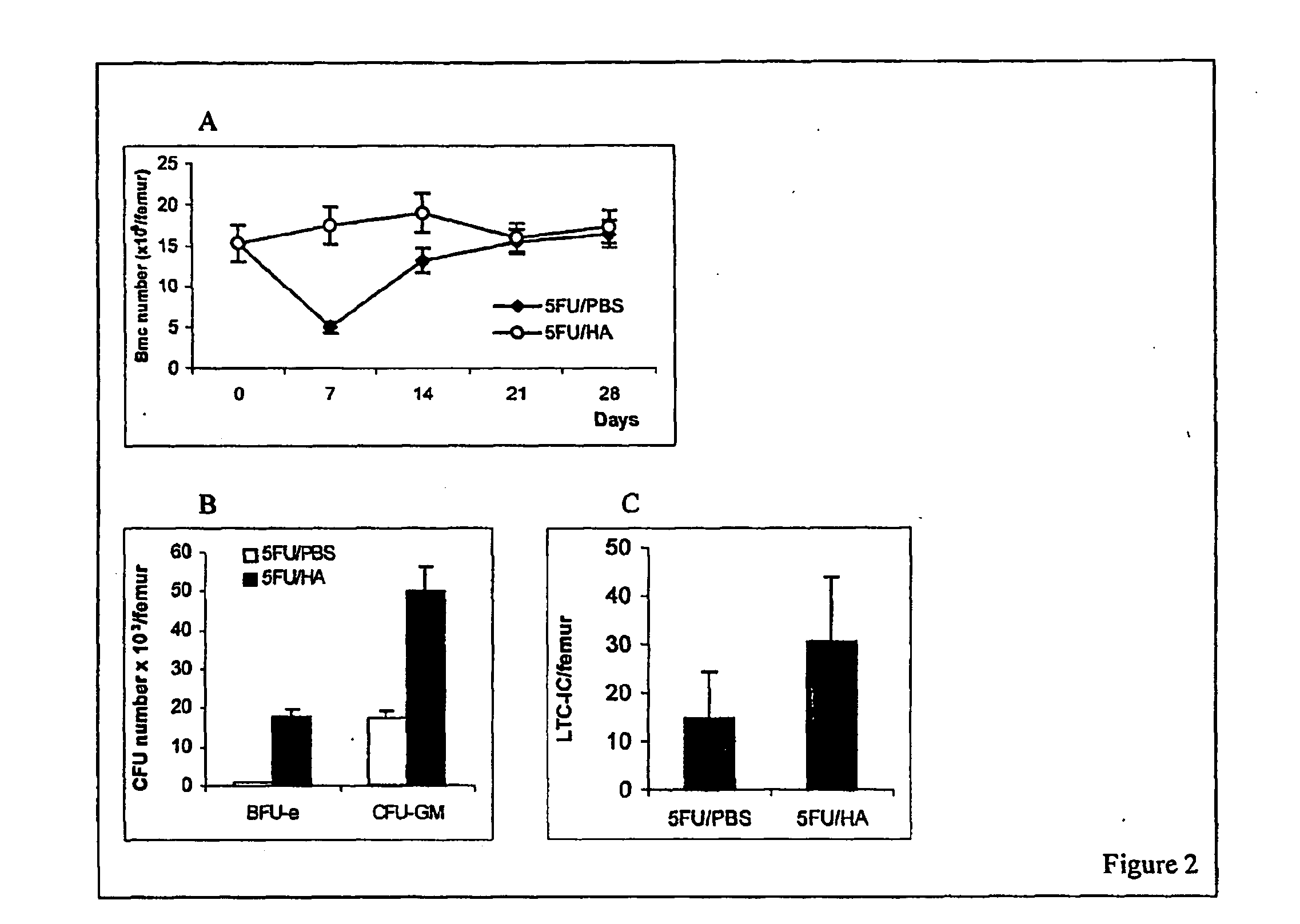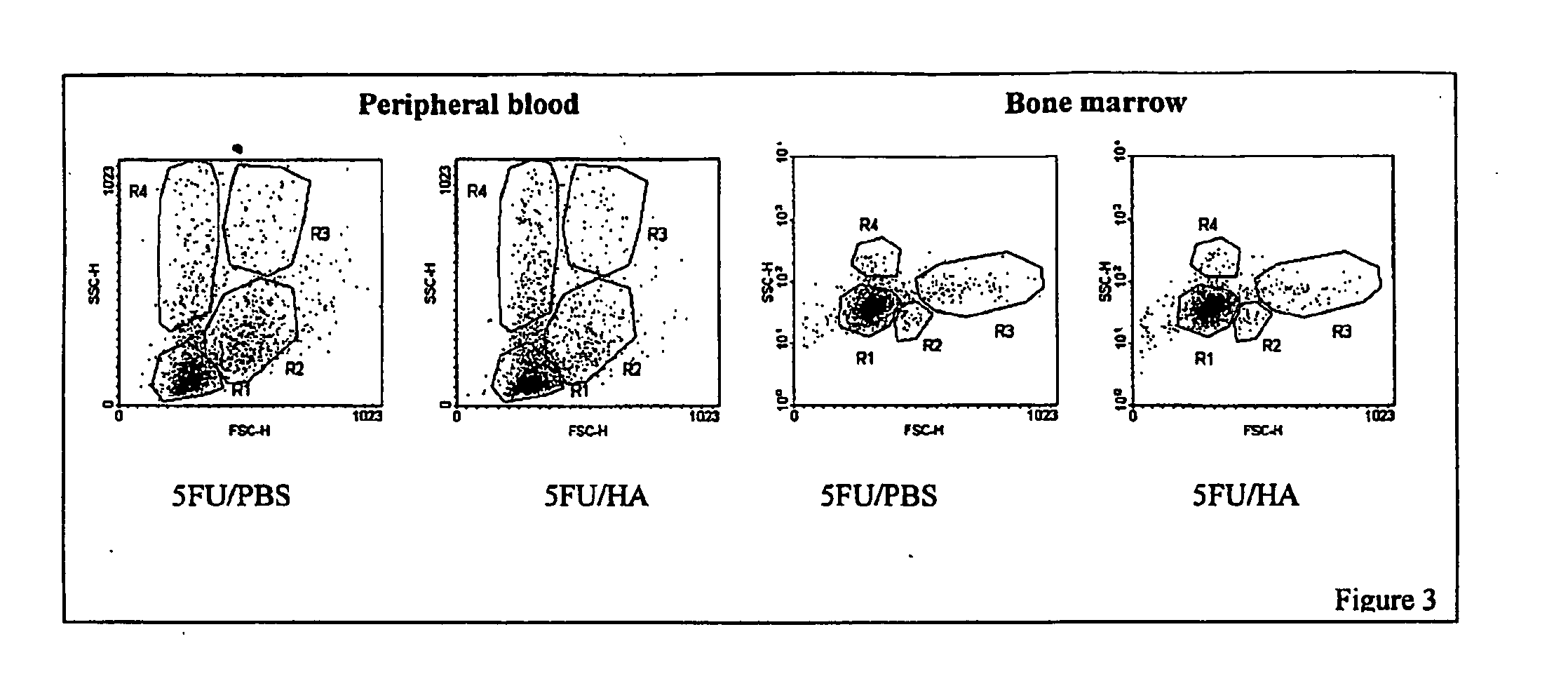Methods for facilitating recovery of functions of endogenous or implanted or transplanted stem cells using hyaluronic acid
a technology of endogenous or implanted or transplanted stem cells and hyaluronic acid, which is applied in the field of medical treatment protocols, can solve the problems of unstable molecule, undesirable side effects, limited life span of mature cells, etc., and achieve the effect of reducing ha, and improving the overall microenvironmental nich
- Summary
- Abstract
- Description
- Claims
- Application Information
AI Technical Summary
Benefits of technology
Problems solved by technology
Method used
Image
Examples
example 1
[0106]FIG. 1 demonstrates the effects of HA on recovery of peripheral blood cells after 5-FU administration. 5-FU was intraperitoneally injected in mice at 150 mg / kg. The counts of white blood cells (WBC), red blood cells (RBC), platelets (PLT), hemoglobin (HGB) and hematocrit (HCT) were monitored daily for two weeks. As expected, the treatment of mice with 5-FU induced severe bone marrow hypoplasia and pancytopenia. The numbers of WBC and PLT dropped from 8.4±1.5×106 / ml and 678.4±82×106 / ml before 5-FU administration to 2.52±0.5×106 / ml and 388±50×106 / ml, respectively, 7 days later (FIGS. 1A, B). The total number of mononuclear cells in the bone marrow decreased from 15.3±2.2×106 / femur before to 5.00±0.65×106 / femur 7 days after 5-FU administration (FIG. 2A). All parameters were recovered to normal in 14 days after 5-FU administration. To examine the effect of HA on 5-FU-perturbed hematopoiesis, 5-FU-treated (day 0) mice were administered 100 μg / mouse HA as a 0.05% solution in PBS (HA...
example 2
[0112] Total-body irradiation sharply decreases the amount of GAGs, including HA, in the spleen and bone marrow. Furthermore, transplantation of bone marrow cells results in a second relapse of HA concentration in hematopoietic tissue. Thus, we investigated the effect of HA on the peripheral blood and bone marrow cell recovery after total body irradiation followed by bone marrow transplantation. Recipient mice were lethally (15.25 Gy at a dose rate of 0.85 Gy / h) irradiated to eliminate endogenous bone marrow hematopoiesis. Hematopoietic Stem / Progenitor Cells (HSPC) were obtained from donor mice, pretreated with 5-FU (150 mg / kg body weight) to eliminate the proliferating committed progenitor cell pool, and transplanted into the recipient mice (104 cells / mouse) 24 hours after irradiation. The recipient mice were administered 200 μl / mouse PBS (control group) or 100 μg / mouse of HA as a 0.05% solution in PBS (Sigma-Aldrich) on day 4, 6, 10, and 13 after transplantation. The number of per...
PUM
| Property | Measurement | Unit |
|---|---|---|
| Mass | aaaaa | aaaaa |
| Mass | aaaaa | aaaaa |
| Mass | aaaaa | aaaaa |
Abstract
Description
Claims
Application Information
 Login to View More
Login to View More - R&D
- Intellectual Property
- Life Sciences
- Materials
- Tech Scout
- Unparalleled Data Quality
- Higher Quality Content
- 60% Fewer Hallucinations
Browse by: Latest US Patents, China's latest patents, Technical Efficacy Thesaurus, Application Domain, Technology Topic, Popular Technical Reports.
© 2025 PatSnap. All rights reserved.Legal|Privacy policy|Modern Slavery Act Transparency Statement|Sitemap|About US| Contact US: help@patsnap.com



